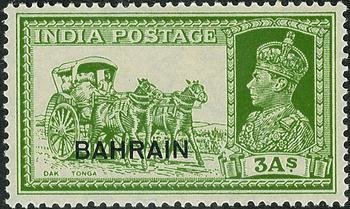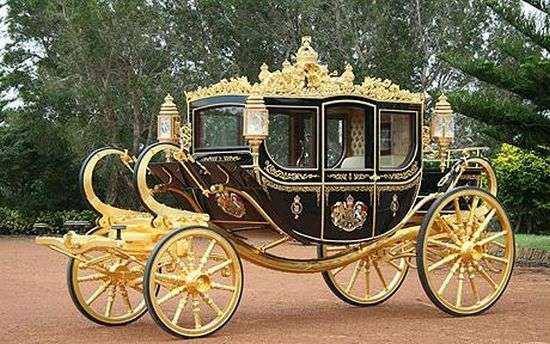Stamp: Tonga with overprint (Bahrain 1941)
Tonga with overprint (Bahrain 1941)
01 January (Bahrain ) within release King George VI and mail transport goes into circulation Stamp Tonga with overprint face value 3 Indian anna
| Stamp Tonga with overprint in catalogues | |
|---|---|
| Michel: | Mi:BH 25 |
| Stanley Gibbons: | Sg:BH 25 |
Stamp is square format.
overprinted Indian stampAlso in the issue King George VI and mail transport:
- Stamp - Tonga with overprint face value 3;
- Stamp - Mail Train with overprint face value 4;
- Stamp - King George VI with overprint face value 10;
- Stamp - King George VI with overprint face value 15;
- Stamp - King George VI with overprint face value 25;
|
Data entry completed
60%
|
|
|---|---|
| Stamp Tonga with overprint in digits | |
| Country: | Bahrain |
| Date: | 1941-01-01 |
| Print: | Typography |
| Perforation: | comb 14 |
| Emission: | Definitive |
| Format: | Stamp |
| Face Value: | 3 Indian anna |
Stamp Tonga with overprint it reflects the thematic directions:
The horse (Equus ferus caballus) is one of two extant subspecies of Equus ferus. It is an odd-toed ungulate mammal belonging to the taxonomic family Equidae. The horse has evolved over the past 45 to 55 million years from a small multi-toed creature, Eohippus, into the large, single-toed animal of today. Humans began to domesticate horses around 4000 BC, and their domestication is believed to have been widespread by 3000 BC. Horses in the subspecies caballus are domesticated, although some domesticated populations live in the wild as feral horses. These feral populations are not true wild horses, as this term is used to describe horses that have never been domesticated, such as the endangered Przewalski's horse, a separate subspecies, and the only remaining true wild horse. There is an extensive, specialized vocabulary used to describe equine-related concepts, covering everything from anatomy to life stages, size, colors, markings, breeds, locomotion, and behavior.
King is the title given to a male monarch in a variety of contexts. The female equivalent is queen regnant (while the title of queen on its own usually refers to the consort of a king). In the context of prehistory, antiquity and contemporary indigenous peoples, the title may refer to tribal kingship. Germanic kingship is cognate with Indo-European traditions of tribal rulership (c.f. Indic rājan, Gothic reiks, and Old Irish rí, etc.) In the context of classical antiquity, king may translate Latin rex or either Greek archon or basileus. In classical European feudalism, the title of king as the ruler of a kingdom is understood as the highest rank in the feudal order, potentially subject, at least nominally, only to an emperor (harking back to the client kings of the Roman Empire). In a modern context, the title may refer to the ruler of one of a number of modern monarchies (either absolute or constitutional). The title of king is used alongside other titles for monarchs, in the West prince, emperor, archduke, duke or grand duke, in the Middle East sultan or emir; etc. Kings, like other royalty, tend to wear purple because purple was an expensive color to wear in the past.
Animals are multicellular, eukaryotic organisms of the kingdom Animalia (also called Metazoa). All animals are motile, meaning they can move spontaneously and independently, at some point in their lives. Their body plan eventually becomes fixed as they develop, although some undergo a process of metamorphosis later on in their lives. All animals are heterotrophs: they must ingest other organisms or their products for sustenance.
A carriage is a two- or four-wheeled horse-drawn vehicle for passengers. Second-hand private carriages were common public transport, the equivalent of modern cars used as taxis. Carriage suspensions are by leather strapping or, on those made in recent centuries, steel springs. Two-wheeled carriages are usually owner-driven.




